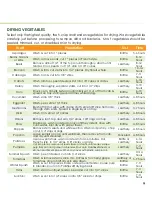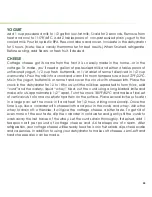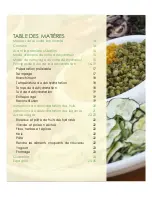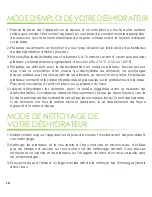
7
testiNg for DryNess
Remove a piece of food, let it cool. Fruits should be pliable, leathery or chip-like. Depending
on your preferences. tear fruits in half, pinch and watch for moisture drops along tear.
Fruit rolls should be leathery with no sticky spots. Vegetables should be tough or crisp.
Meat and fish jerky should be tough, not brittle.
storage
Containers for dried foods should be safe from moisture and insects. Glass jars with tightly
fitted lids, plastic zip-lock and vacuum/heat-sealable bags are recommended storage
containers. Food-safe metal cans, such as coffee cans or cookie tins, may be used to store
individual bags for extra protection. store in a cool, dark and dry area at 50º - 60ºF/10º - 16ºC.
reCoNstitUtioN or rehyDratioN
Reconstituting dried foods adds yet another dimension to the versatility of daily food
preparation. Properly dried foods rehydrate well. they return practically to their original
size, form and appearance. there are several methods of reconstituting dehydrated food,
including soaking foods in water or juice, placing food in boiling water, cooking, or using
an electric steamer. It is important to remember not to add salt, sugar or spices during
the initial five minutes of reconstitution as these additives hinder the absorption process.








































